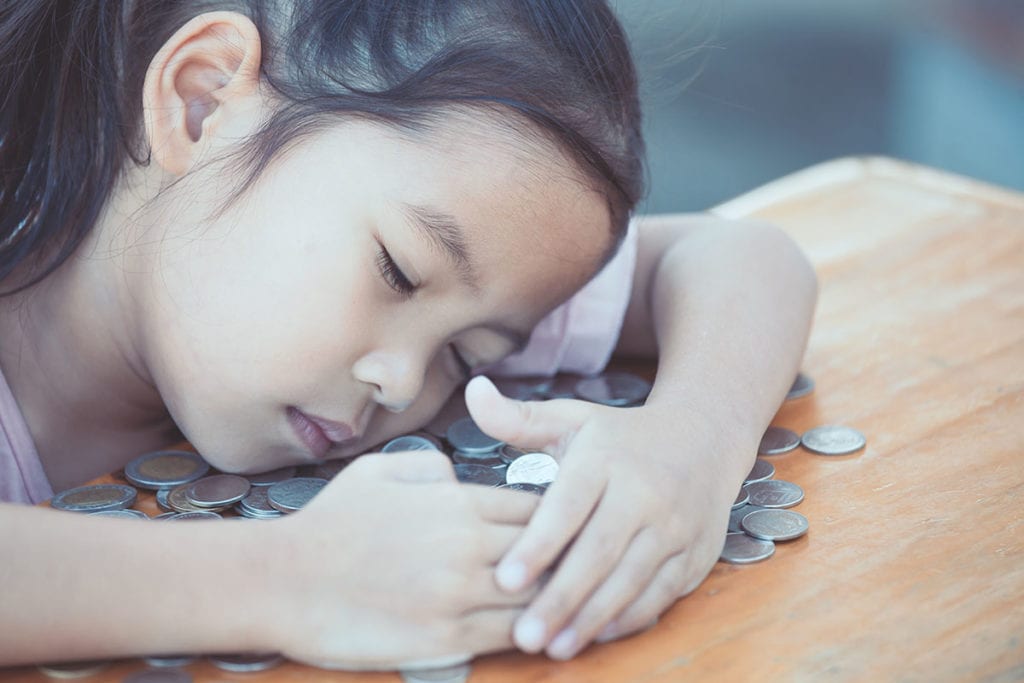Is your child “messy” or is he/she exhibiting early signs of hoarding?
It’s not unusual for a parent to walk into their child’s room and find it looks like a bomb went off inside. The floor is littered with clothing, food wrappers, last night’s homework or permission slips, and the bed seems unable to accommodate a sleeping person given the amount of random belongings strewn over it. But how can a parent determine the difference between typical children’s clutter and signs of hoarding? And what causes hoarding in children?
What Is Hoarding?
When a person thinks of hoarding, visions of A&E’s “Hoarding” series that depicts people living under mounds of boxes, debris and garbage may come to mind. While some extreme cases can get to that point, hoarding can be evident at varying levels and may be difficult to detect, especially in children. As of 2015, hoarding has been added to the DSM-5 (Diagnostic and Statistical Manual of Mental Disorders 5th edition), categorized as an obsessive-compulsive disorder and described as “difficulty discarding possessions, regardless of their actual value, which can result in clutter as well as significant distress or impairment.”
In other words, a person who engages in hoarding experiences emotional stress over parting with their possessions. Even disposing of items that can be considered trash is difficult. Although hoarding is generally viewed as an adult issue, there is evidence to suggest that hoarding begins during childhood and continues into adulthood. But research to determine what causes hoarding, whether it is connected to other anxiety disorders, and how it might be managed prior to reaching adulthood, is limited.
Signs of Hoarding in Children
It can be hard to identify hoarding in children because generally, kids don’t have the means to obtain new possessions and parents are in a position to limit acquisition and prevent excessive clutter. Even still, children who are hoarding, rather than simply being disorganized, will become exceedingly attached to their possessions and exhibit signs of extreme distress when required to part with them, regardless of their actual value.
Since children generally can’t purchase new possessions, materials they tend to hoard are those that are easy to obtain. Some examples include items they already possess, like toys they’ve been given but are now broken, the clothing they can’t wear, miscellaneous giveaways, food, and objects found at random, like rocks, pencils, and paper.
Additionally, because hoarding tends to be chronic (it does not fluctuate), signs that your child might be hoarding will not ebb and flow but remain consistent. If your child chronically accumulates large amounts of miscellaneous items he or she refuses to get rid of regardless of their value and becomes excessively angry or unmanageable if asked to part with them, your child may be hoarding.
What Causes Hoarding in Children?
Understanding what causes hoarding in children can help reduce the negative effects of the behavior and redirect the course of their future. But because most studies involving children and hoarding are focused on the connection between various anxiety disorders, such as obsessive-compulsive disorder and hoarding rather than hoarding alone, it is often difficult to even identify, let alone determine, what causes hoarding in children. However, at least one study published in 2016 by the American Academy of Child and Adolescent Psychiatry suggests that hoarding in children is distinct from other anxiety disorders, has its own genetic, cognitive, mental and emotional correlations, and can be triggered by traumatic experiences.
Treatment Strategies
So how can you help prevent your child from hoarding? Some approaches include creating behavioral strategies to encourage desired conduct and discourage undesirable activities.
Limit
Create rules around allowable quantities and allotted space for specific items. For instance, in addition to restricting acquisition of possessions, you may determine that your child is allowed to keep only as many toys as can fit in their toy box, or as one item comes into the space, another must be removed.
Reward
Creating a system of incentives for discarding items may help to replace feelings of anxiety about parting with possessions that carry memories. But remember, try to provide activity-based rewards in order to avoid giving your child more “things.”
Therapy
Some older children, or those with more pronounced hoarding behaviors, may benefit from cognitive behavior therapy to help them understand why they are hoarding and develop ways to decide which possessions are worth keeping and which should be discarded.
Therapy Options for the Early Signs of Hoarding in Children
If your child needs therapy, Promises Behavioral Health can help. We offer a variety of treatments, including:
- Cognitive-behavioral therapy
- Trauma therapy
- Anxiety treatment
- OCD treatment
- Dialectical behavioral therapy
To learn more, call 844.875.5609 today.

